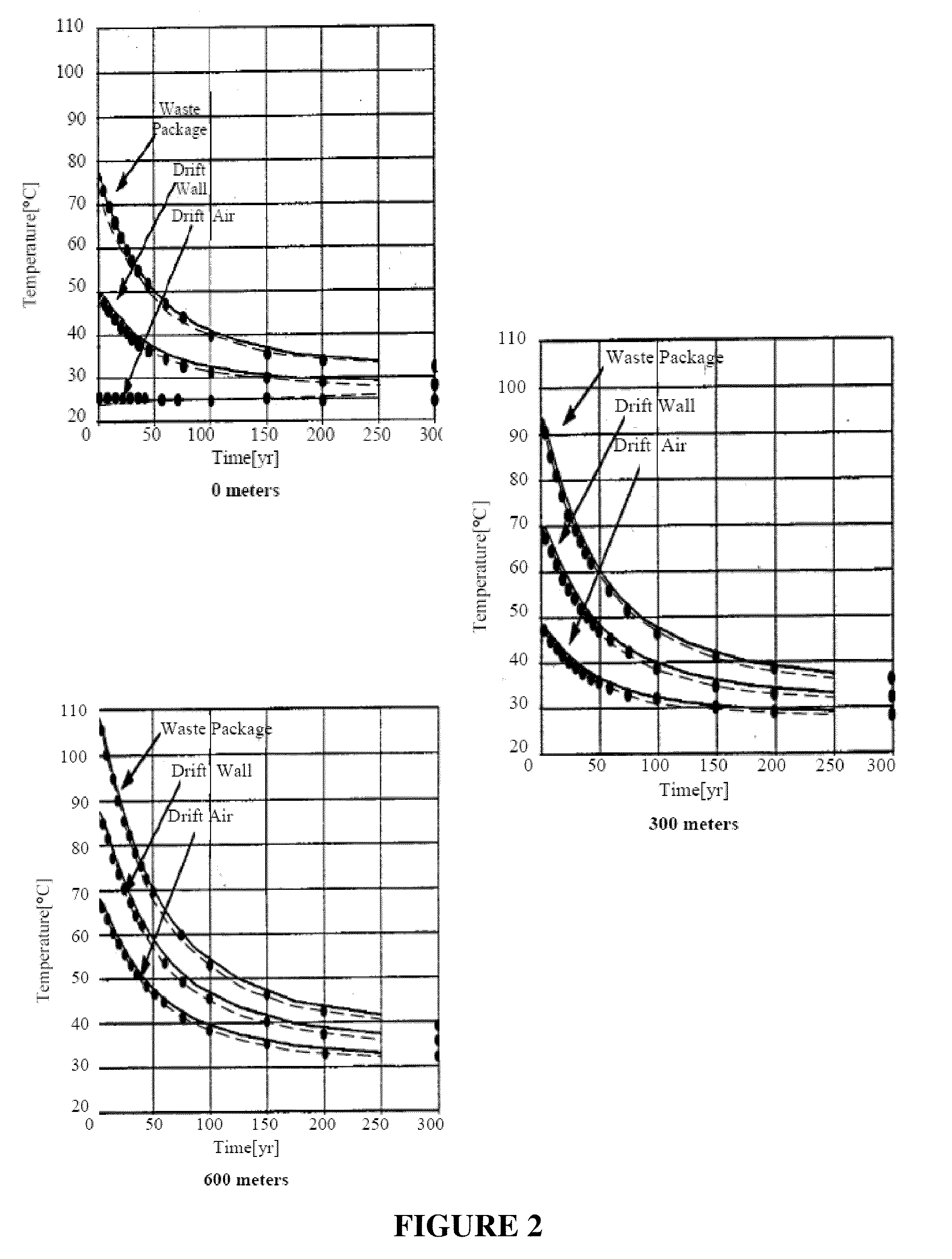Multiphase physical transport modeling method and modeling system
a multi-phase physical transport and modeling system technology, applied in the field of computational mathematical modeling, can solve the problems of requiring sophisticated computational methods and extensive computer resources, requiring conventional modeling methods to generate adequate detailed data at a useful pace, and consuming as much as 500 years of conventional methods and equipment to run a full-mountain hydrothermal and ventilation simulation in 300 years. the effect of computational tim
- Summary
- Abstract
- Description
- Claims
- Application Information
AI Technical Summary
Benefits of technology
Problems solved by technology
Method used
Image
Examples
Embodiment Construction
[0045]In preferred embodiments, the inventive method includes the use of a linear or non-linear, algebraic or differential, general mathematical model, herein referenced a “numerical transport code functionalization” (“NTCF” hereinafter) model as a surrogate to represent a corresponding available numerical transport code “NTC”, or codes for the exact or approximate solution of an original time- and space-variable transport problem involving multiphase physical transport.
[0046]In other words, the preferred inventive modeling methods and systems employ a mathematically derived functionalization model of the or each numeric transport code, NTCF, conventionally used to model a natural or manmade system, in place of the numeric transport code itself, to provide novel physical system models. Preferred embodiments of the inventive novel physical system models can, be as detailed and accurate as, and can be processed more rapidly, in some cases far more rapidly, as much as two or three orde...
PUM
 Login to View More
Login to View More Abstract
Description
Claims
Application Information
 Login to View More
Login to View More - R&D
- Intellectual Property
- Life Sciences
- Materials
- Tech Scout
- Unparalleled Data Quality
- Higher Quality Content
- 60% Fewer Hallucinations
Browse by: Latest US Patents, China's latest patents, Technical Efficacy Thesaurus, Application Domain, Technology Topic, Popular Technical Reports.
© 2025 PatSnap. All rights reserved.Legal|Privacy policy|Modern Slavery Act Transparency Statement|Sitemap|About US| Contact US: help@patsnap.com



